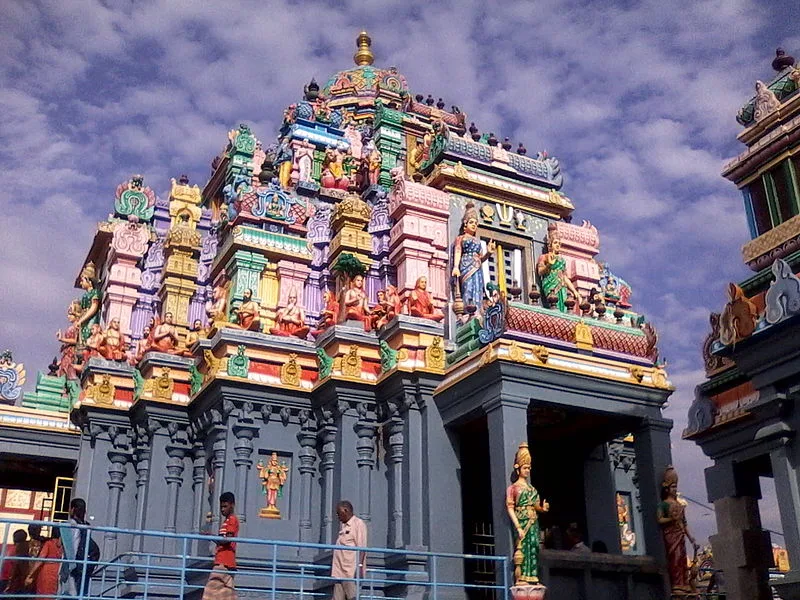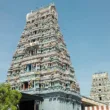Discover the divine allure of Ashtalakshmi Temple in Chennai, a sacred haven that seamlessly combines architectural splendor with spiritual significance. Our guide provides an in-depth exploration of this revered destination, highlighting its historical roots, cultural importance, and the unique experiences it offers to visitors.
Unveiling the Architectural Marvel
A Fusion of Tradition and Grandeur
Ashtalakshmi Temple stands as a testament to the rich cultural heritage of Chennai. The architecture seamlessly blends traditional Dravidian and contemporary styles, creating a visual spectacle that captivates devotees and architecture enthusiasts alike. The intricate carvings and vibrant sculptures narrate tales of mythological significance, adding an extra layer of depth to the overall aesthetic.
Eight Forms of the Divine Goddess
The temple’s focal point lies in its dedication to Goddess Lakshmi in her eight divine forms, known as Ashtalakshmi. Each sanctum within the temple premises is dedicated to a specific manifestation, fostering a unique spiritual ambiance. Devotees can embark on a journey through the various shrines, each representing different facets of wealth, prosperity, and well-being.
Spiritual Significance
A Sacred Oasis in Chennai
Nestled along the shores of the Bay of Bengal, Ashtalakshmi Temple exudes an aura of tranquility and spirituality. Pilgrims flock to this sacred site seeking blessings for prosperity, success, and harmony in their lives. The temple’s serene ambiance provides a perfect setting for devotees to connect with the divine.
Rituals and Festivals
The temple comes alive during festivals, with elaborate rituals and vibrant celebrations. Navaratri, in particular, witnesses a grand spectacle as the entire temple is adorned with lights, flowers, and fervent devotions. These festivities draw worshippers from far and wide, creating a unique blend of cultural fervor and religious devotion.
Visitor Experience
Navigating the Temple Grounds
To enhance the visitor experience, Ashtalakshmi Temple offers well-guided tours, providing insights into its history and spiritual significance. The meticulously maintained surroundings and informative guides ensure that every visitor gains a profound understanding of the temple’s cultural and religious importance.
Embracing Spiritual Serenity
Devotees and tourists alike find solace in the temple’s peaceful ambiance. The well-manicured gardens and serene pond surrounding the temple provide a tranquil escape from the hustle and bustle of city life. Visitors can participate in meditation sessions or simply enjoy a moment of quiet reflection.
How to Reach
For those planning a visit to Ashtalakshmi Temple, it is conveniently located in the Elliot’s Beach area of Chennai. Easily accessible by road, the temple welcomes pilgrims and tourists throughout the year.
Conclusion
Ashtalakshmi Temple in Chennai stands not just as a religious icon but as a cultural gem, blending tradition with contemporary allure. Its architectural grandeur, spiritual significance, and immersive visitor experience make it a must-visit destination. Embark on a journey of divinity and cultural richness as you explore the enchanting realms of Ashtalakshmi Temple.
Similar Articles
Frequently Asked Questions about Ashtalakshmi Temple, Chennai
1. What is the significance of the Ashtalakshmi Temple?
Ashtalakshmi Temple holds immense significance as it is dedicated to Goddess Lakshmi in her eight divine forms. These manifestations symbolize different aspects of wealth, prosperity, and well-being, making the temple a revered destination for devotees seeking blessings.
2. What is the architectural style of Ashtalakshmi Temple?
The temple showcases a mesmerizing blend of traditional Dravidian and contemporary architectural styles. Elaborate carvings, vibrant sculptures, and intricate designs adorn the structure, creating a visual spectacle that attracts both spiritual seekers and architecture enthusiasts.
3. Can you explain the eight forms of Goddess Lakshmi worshipped at the temple?
Certainly. The eight forms, known as Ashtalakshmi, include Adi Lakshmi, Dhanya Lakshmi, Veera Lakshmi, Gaja Lakshmi, Santana Lakshmi, Dhana Lakshmi, Vidya Lakshmi, and Vijaya Lakshmi. Each form represents a specific aspect of life, and devotees can seek blessings for various attributes, including prosperity, knowledge, and victory.
4. How does Ashtalakshmi Temple contribute to the cultural landscape of Chennai?
Ashtalakshmi Temple serves as a cultural gem in Chennai, seamlessly blending tradition with contemporary allure. The temple’s grandeur, cultural events, and festivals contribute to the vibrant cultural tapestry of the city, attracting visitors from diverse backgrounds.
5. Are there any specific rituals or festivals celebrated at Ashtalakshmi Temple?
Yes, the temple hosts elaborate rituals and festivals, with Navaratri being a highlight. During Navaratri, the entire temple is adorned with lights and flowers, creating a captivating ambiance. Pilgrims and tourists alike gather to participate in the festivities, adding to the cultural fervor of the temple.
6. How can visitors enhance their experience at Ashtalakshmi Temple?
To enhance their experience, visitors can opt for guided tours offered by the temple. These tours provide insights into the history, architecture, and spiritual significance of the temple. Additionally, the serene surroundings offer an ideal setting for meditation and quiet contemplation.
7. Is Ashtalakshmi Temple easily accessible?
Yes, the temple is conveniently located in the Elliot’s Beach area of Chennai, making it easily accessible by road. Pilgrims and tourists can plan their visit throughout the year to partake in the spiritual and cultural richness offered by Ashtalakshmi Temple.
8. Can visitors participate in meditation sessions at the temple?
Absolutely. The temple’s well-maintained gardens and serene pond create a peaceful atmosphere conducive to meditation. Visitors are encouraged to embrace the spiritual serenity of the surroundings, making it a holistic experience beyond the architectural and cultural aspects of the temple.









